Table of Contents
PENGUIN CLASSICS
CLASSICS THE BEAST WITHIN
MILE ZOLA, born in Paris in 1840, was brought up in Aix-en-Provence in an atmosphere of struggling poverty after the death of his father in 1847. He was educated at the College Bourbon at Aix and then at the Lyce Saint-Louis in Paris. After failing the baccalaurat twice and then taking menial clerical employment, he joined the newly founded publishing house Hachette in 1862 and quickly rose to become head of publicity. Having published his first novel in 1865 he left Hachette the following year to become a full-time journalist and writer. Thrse Raquin appeared in 1867 and caused a scandal, to which he responded with his famous Preface to the novels second edition in 1868 in which he laid claim to being a Naturalist. That same year he began to work on a series of novels intended to trace scientifically the effects of heredity and environment in one family: Les Rougon-Macquart. This great cycle eventually contained twenty novels, which appeared between 1870 and 1893. In 1877 the seventh of these, LAssommoir (The Drinking Den), a study of alcoholism in working-class Paris, brought him abiding wealth and fame. On completion of the Rougon-Macquart series he began a new cycle of novels, LesTroisVilles: Lourdes,Rome, Paris (1894-8), a violent attack on the Church of Rome, which led to another cycle, Les Quatre vangiles. While his later writing was less successful, he remained a celebrated figure on account of the Dreyfus case, in which his powerful interventions played an important part in redressing a heinous miscarriage of justice. His marriage in 1870 had remained childless, but his happy, public relationship in later life with Jeanne Rozerot, initially one of his domestic servants, brought him a son and a daughter. He died in mysterious circumstances in 1902, the victim of an accident or murder.
ROGER WHITEHOUSE was educated at King Edward VI Grammar School, Aston, in Birmingham. He studied French at the University of Oxford and later at the University of Warwick, where he specialized in Renaissance Studies. For several years he lived and worked in Paris, teaching at the cole Normale Suprieure and at the Sorbonne. In 1970 he joined the staff at Bolton Institute as a lecturer in French and subsequently became Head of Literary Studies there. In 2000 he was appointed as a Research Fellow. He has previously translated Flauberts Three Tales (Penguin Classics, 2005) and is currently editing an anthology of the work of the Belgian poet mile Verhaeren.
Chronology
1840 (2 April) mile Zola born in Paris, the only son of an Italian engineer, Francesco Zola (b. 1795) and of Franoise-Emilie Auber (b. 1819).
1843 The family moves to Aix-en-Provence, which becomes the town of Plassans in the Rougon-Macquart novels. Plassans is the birthplace of Jacques Lantier.
1847 (27 March) Francesco Zola dies from pneumonia caught while supervising a project to supply Aix-en-Provence with drinking water. The family is left almost destitute.
1848 The July monarchy (King Louis-Philippe) is overthrown, and the Second Republic is declared.
1851 The Republic is dissolved after the coup dtat of Louis-Napoleon Bonaparte.
1852 (2 December) Louis-Napoleon Bonaparte proclaimed Emperor as Napoleon III. Start of the Second Empire, the period in which the Rougon-Macquart novels are set. Zola is enrolled as a boarder at the College Bourbon in Aix, where he forms a friendship with Paul Czanne.
1853 (June) Baron Georges-Eugne Haussmann is appointed Prefect of the Seine and begins major rebuilding of central Paris (this is mentioned in La Bte humaine).
1858 (February) Leaves Aix to join his mother in Paris. Attends the Lyce Saint-Louis.
1859 Falls ill with typhoid and twice fails the baccalaurat.
1860 A period of great hardship. Attempts to make a living from writing. (6 December) Victor Poinsot murdered on a train travelling from Troyes to Paris.
1862 (I March) Zola starts working for the publisher Hachette. Initially employed in the dispatch office, he is quickly appointed as head of publicity. (31 October) Becomes a naturalized French citizen.
1863 First newspaper article published.
1864 Publication of his first literary work, Contes Ninon, a collection of short stories.
1865 Publishes first novel, La Confession de Claude. Meets his future wife, Gabrielle-Alexandrine Meley (b. 1839). They do not marry until 1870.
1866 Resigns his position at Hachette. From this point Zola lives by his writing. Writes articles for Lvnement, praising the work of Manet and Monet. Frequents the Caf Guerbois in the Batignolles district of Paris, the rendezvous of the Impressionist painters. (November) Lvnement suppressed.
1867 Publication of Thrse Raquin.
1868 (April) In the preface to the second edition of Thrse Raquin, Zola announces his allegiance to the literary school of Naturalism. (December) Publication of Madeleine Frat. Begins to plan the Rougon-Macquart cycle of novels. Signs contract for the work with the publisher Lacroix. Continues to work as journalist for various newspapers.
1869 (May) Elections for Legislative Assembly. Civil disturbances in Paris. The action of La Bte humaine takes place between mid-February 1869 and July 1870.
1870 (8 May) Plebiscite on new constitution. (3 I May) Marries Alexandrine. (19 July) France declares war on Prussia. (September) Napoleon III surrenders to Prussia at Sedan. The Third Republic is declared. Zola moves temporarily to Marseille. Paris is besieged by the Prussian army. Napoleon III and Empress Eugnie go into exile in England. La Fortune des Rougon, the first of the Rougon-Macquart novels, begins to appear in serial form.
1871 (28 January) Armistice with Prussia. (March) Zola returns to Paris. (28 March) Election of the Commune. (28 May) End of the Commune. Publication in book form of La Fortune des Rougon.
1872 (January) Publication of La Cure.
1873 (April) Publication of Le Ventre de Paris, set in and around the central Paris market, Les Halles.
1874 (May) Publication of La Conqute de Plassans.
1875 (April) Publication of La Faute de lAbb Mouret. 1876 (February) Publication of Son Excellence Eugne Rougon. The novel describes the career of a Minister of State under the Second Empire. Later in the year LAssommoir appears in serialized form, firstly in Le Bien public, and subsequently in La Rpublique des Lettres (Le Bien public having refused to continue publication). The novel gives a sombre account of the effects of drink on the working-class inhabitants of the Paris slums.
1877 LAssommoir is published in book form. The novel is a bestseller (thirty-eight impressions in one year) and establishes Zolas reputation as a novelist. After years of hardship, Zola becomes a rich man. Paintings of the Gare Saint-Lazare by Monet.
1878 Zola buys a house at Mdan, thirty miles outside Paris. He uses the house as a retreat for his writing. (June) Publication of Une page damour, a gentler story of domestic life. 1879 Publication in serial form of



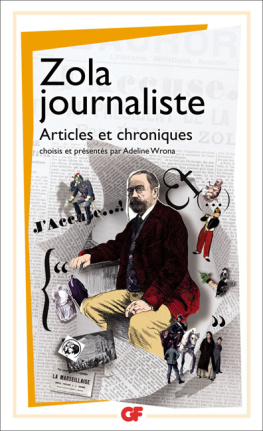
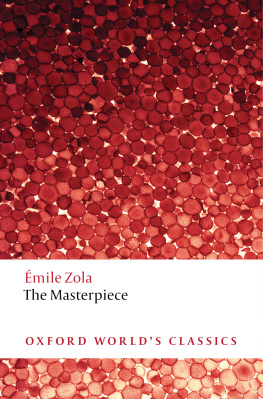
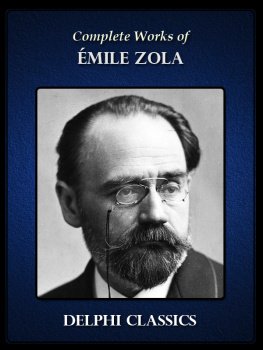
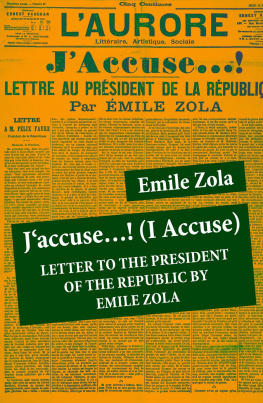

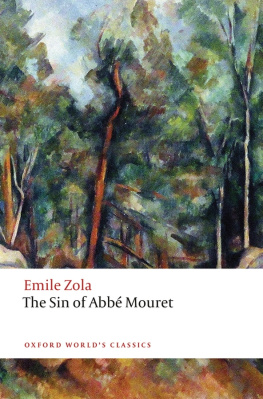
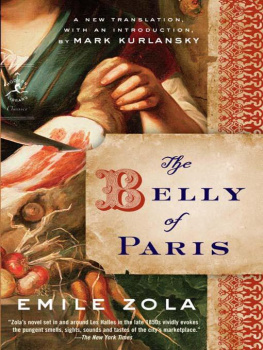

 CLASSICS
CLASSICS